BACK TO finalistS
FINALIST
ABHUDAYA CENTRE SOCIO-CULTURAL HUB IN ABHANERI HERITAGE VILLAGE
Abhudaya centre (Socio-cultural Hub in Abhaneri - Heritage Village) As the digital era flourishes, taking over all domains of our lives, people continue to migrate to metropolitan areas and the ever-accelerating phenomenon of urbanisation continues to grow, we are progressively losing track of our history and tradition. Abhaneri is a village near Jaipur. It was […]

Abhudaya centre (Socio-cultural Hub in Abhaneri - Heritage Village)
As the digital era flourishes, taking over all domains of our lives, people continue to migrate to metropolitan areas and the ever-accelerating phenomenon of urbanisation continues to grow, we are progressively losing track of our history and tradition.
Abhaneri is a village near Jaipur. It was originally called Abhanagri which means the city of brightness – Abha meaning light and nagri translating to city. As time progressed the name lost its meaning and the city lost its unique character.
It is losing its great array of craftsmanship and cultural identity at an unprecedented pace. The need to go back to our roots has never been more imperative lest we lose our identity.
The village also houses the largest stepwell in India, Chand Baori, ruins of the Harshad Mata temple, along with being home to an array of local crafts such as lac bangles, pottery and stone work. Despite its rich cultural heritage, the village attracts little to no tourism and is at the risk of becoming a forgotten relic as there is no economy being generated around it.
The objective of this project is to provide the people a platform to showcase their skills, impart their knowledge and subsequently preserve the unique culture and artistry of the place. The proposal is to establish a sociocultural hub which would offer the local artisans new job opportunities.
The hope is to create a desire to reset our lifestyle, remember our history and respect our tradition. This ode to the past aims to remind us that our heritage is an innate part of ourselves and that it is important to return to it every now and then.
A museum formed of the remnants of the Harshad Mata temple is a part of the project. The remains of the temple, which are currently being housed inside the Chand Baori, will be preserved along with other relics that represent the residents and their culture. The socio- cultural hub references and draws inspiration from the exquisite craftsmanship found in poetry, bangle making, stone artefacts and the inherent beauty in the simplicity and straightforward elegance of village life. In this way, the project aims to take us back to our foundation, to the base of the simplistic nature of lives and for a moment to take us away from the chaos created by the onset of the digital age.
“Hope of Brightness in a Heaven of Stone”
Abhaneri is situated in the Dausa district, whose name comes from the Sanskrit words Dhau and Sa. ‘Dhau’ means “heaven” and ‘Sa’ means “alike” so Dausa means “alike heaven”. The district is also known for the stone and stone artefacts found in the region and is thus likened to be a “heaven of stone”. For the museum, locally accessible materials have been used like the Dholapur red stone and the Dholapur beige stone. Along with reducing the carbon footprint, the use of local materials reinforces the aim of preserving the local heritage of the place and is an attempt in staying true and rooted to the identity of the place.
Clean lines and a calming colour scheme reflect the purity in the simplicity of a life in the village and highlights a villager’s philosophy of life. The interior exhibit rooms have a sense of tranquillity surrounding them as the curvilinear window outside overlooks the scenic views of the site and embraces the historical cultural relics. This can be compared to the historical experiences of Chand Baori and Harshad Mata Temple, two sites of significant heritage importance.
Originally, the Harshad Mata temple was a Vaishnava shrine reflecting Hindu iconography and architecture. However, during the time of the Mughal Empire, under the rule of Aurangzeb, the temple was demolished to a certain extent to show features of Islamic architecture. The museum references these old features and reimagines them into a modern look with the use of glass, clerestory windows etc., while simultaneously nodding back to history by combining the features.





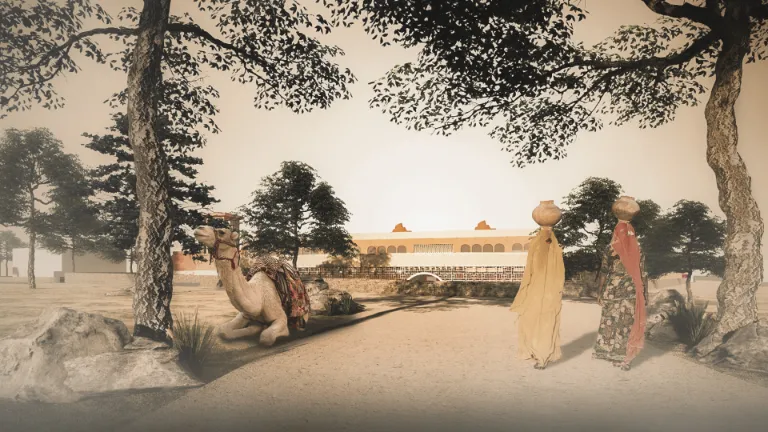


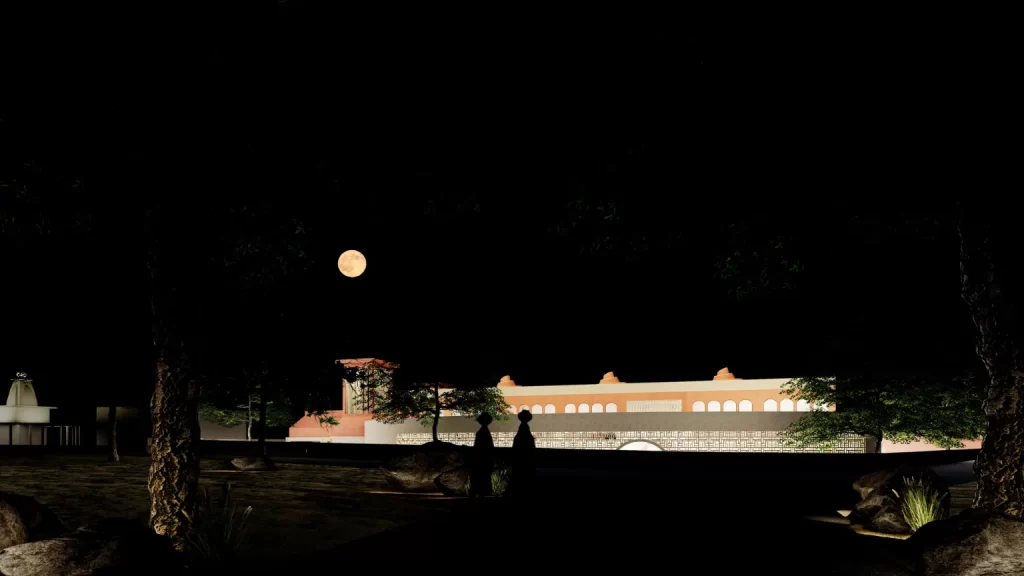



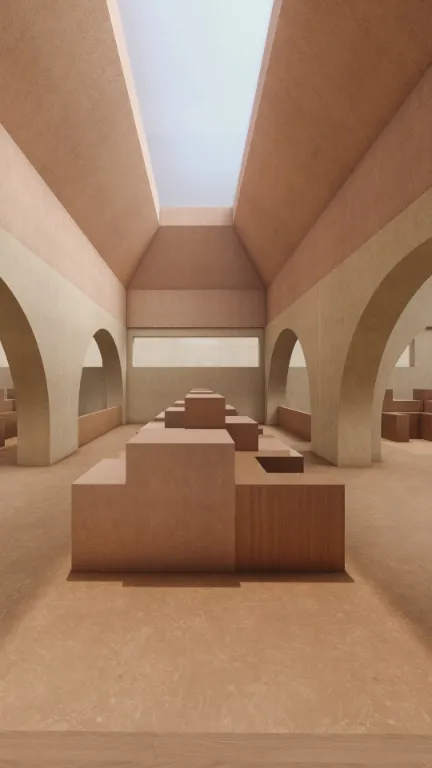
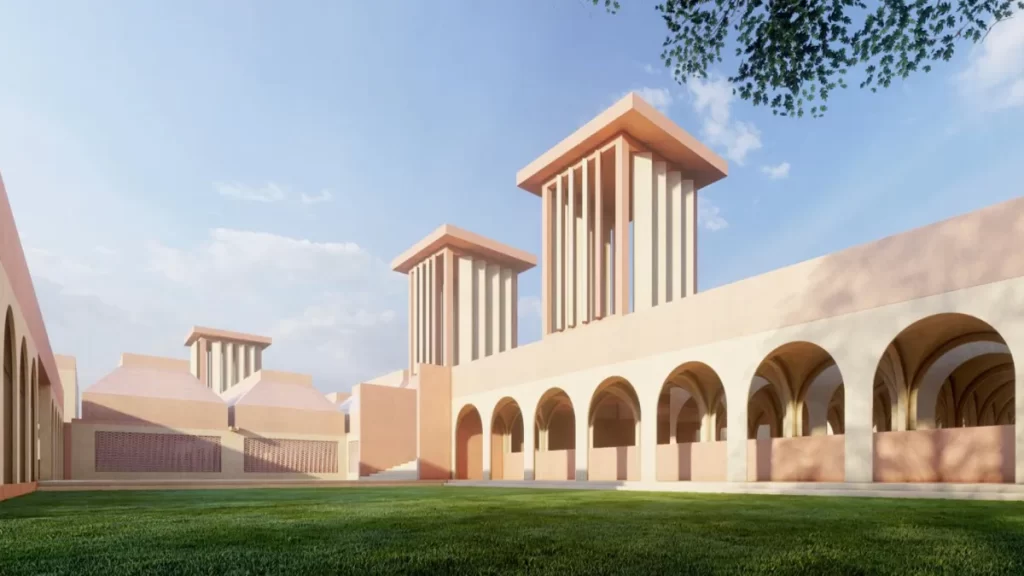
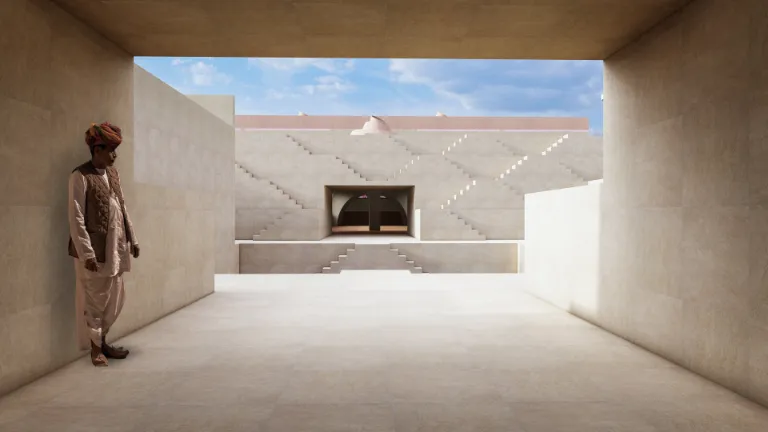
Showcase your design to an international audience
SUBMIT NOW
Image: Agrapolis Urban Permaculture Farm by David Johanes Palar
Top
Abhudaya centre (Socio-cultural Hub in Abhaneri - Heritage Village) As the digital era flourishes, taking over all domains of our lives, people continue to migrate to metropolitan areas and the ever-accelerating phenomenon of urbanisation continues to grow, we are progressively losing track of our history and tradition. Abhaneri is a village near Jaipur. It was originally called Abhanagri which means the city of brightness – Abha meaning light and nagri translating to city. As time progressed the name lost its meaning and the city lost its unique character. It is losing its great array of craftsmanship and cultural identity at an unprecedented pace. The need to go back to our roots has never been more imperative lest we lose our identity. The village also houses the largest stepwell in India, Chand Baori, ruins of the Harshad Mata temple, along with being home to an array of local crafts such as lac bangles, pottery and stone work. Despite its rich cultural heritage, the village attracts little to no tourism and is at the risk of becoming a forgotten relic as there is no economy being generated around it. The objective of this project is to provide the people a platform to showcase their skills, impart their knowledge and subsequently preserve the unique culture and artistry of the place. The proposal is to establish a sociocultural hub which would offer the local artisans new job opportunities. The hope is to create a desire to reset our lifestyle, remember our history and respect our tradition. This ode to the past aims to remind us that our heritage is an innate part of ourselves and that it is important to return to it every now and then. A museum formed of the remnants of the Harshad Mata temple is a part of the project. The remains of the temple, which are currently being housed inside the Chand Baori, will be preserved along with other relics that represent the residents and their culture. The socio- cultural hub references and draws inspiration from the exquisite craftsmanship found in poetry, bangle making, stone artefacts and the inherent beauty in the simplicity and straightforward elegance of village life. In this way, the project aims to take us back to our foundation, to the base of the simplistic nature of lives and for a moment to take us away from the chaos created by the onset of the digital age. “Hope of Brightness in a Heaven of Stone” Abhaneri is situated in the Dausa district, whose name comes from the Sanskrit words Dhau and Sa. ‘Dhau’ means “heaven” and ‘Sa’ means “alike” so Dausa means “alike heaven”. The district is also known for the stone and stone artefacts found in the region and is thus likened to be a “heaven of stone”. For the museum, locally accessible materials have been used like the Dholapur red stone and the Dholapur beige stone. Along with reducing the carbon footprint, the use of local materials reinforces the aim of preserving the local heritage of the place and is an attempt in staying true and rooted to the identity of the place. Clean lines and a calming colour scheme reflect the purity in the simplicity of a life in the village and highlights a villager’s philosophy of life. The interior exhibit rooms have a sense of tranquillity surrounding them as the curvilinear window outside overlooks the scenic views of the site and embraces the historical cultural relics. This can be compared to the historical experiences of Chand Baori and Harshad Mata Temple, two sites of significant heritage importance. Originally, the Harshad Mata temple was a Vaishnava shrine reflecting Hindu iconography and architecture. However, during the time of the Mughal Empire, under the rule of Aurangzeb, the temple was demolished to a certain extent to show features of Islamic architecture. The museum references these old features and reimagines them into a modern look with the use of glass, clerestory windows etc., while simultaneously nodding back to history by combining the features.














